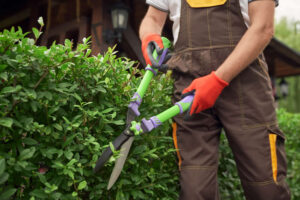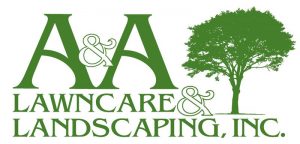
Importance of Proper Pruning
Properly pruned shrubs not only enhance the aesthetic appeal of your garden but also contribute to the overall health and longevity of the plants. Pruning helps in removing dead or damaged branches, promoting new growth, improving air circulation, and ensuring that the shrub maintains its natural shape. Additionally, trimming shrubs at the right time and using the correct techniques can prevent diseases and encourage the development of larger and more vibrant flowers.
Understanding the Timing
Timing is crucial when it comes to pruning shrubs. The ideal time to prune depends on whether the shrub flowers on new wood or old wood. Shrubs that flower on new wood, such as rose-of-Sharon and summersweet, should be pruned in late February or early March. On the other hand, shrubs that bloom on old wood, like spring-flowering shrubs, should be pruned right after they bloom. If you miss the ideal time to prune, you can always wait until the shrub’s flowers brown out before proceeding with the pruning process.
The 4 Ds of Pruning
Before diving into the specific techniques of shrub trimming, it’s essential to understand the concept of the “4 Ds” of pruning. These four principles serve as a guide when deciding which branches to cut:
-
- Dead branches: Start by identifying and removing any dead branches. Deadwood not only affects the appearance of the shrub but can also lead to disease and rot.
- Damaged branches: Look for branches that are damaged or injured. Pruning them will prevent further damage and promote healthier growth.
- Diseased branches: If you notice any branches that show signs of disease, it’s crucial to remove them promptly. Cutting out diseased branches can prevent the spread of the disease to other parts of the shrub.
- Deranged branches: Deranged branches refer to those that cross, loop down to the ground, or grow at odd angles. These branches disrupt the natural shape of the shrub and hinder healthy growth. Removing them not only improves the appearance but also allows more light and air to reach the interior of the plant.
Selective Pruning for Neatening Up
If you inherit a poorly pruned shrub, it’s essential to make selective cuts to neaten it up. By stimulating new growth where desired and removing injured or less vigorous wood, you can improve the overall appearance of the shrub. To make selective cuts, follow these steps:
-
- Find a bud: Look for a bud facing the direction you want new growth to follow.
- Make an angled cut: Prune just above the bud at a 45-degree angle, with the lowest point of the cut farthest from the bud. This angle promotes healing and prevents rot.
- Avoid leaving excessive growth: Ensure that you don’t leave more than ¼ inch of growth above the bud, as this can encourage rot. Cutting too low can cause the bud to dry out, while cutting at an angle greater than 45 degrees can slow down healing and invite disease.
Thinning Cuts for Dense Foliage
Shrubs with dense foliage at the top but sparse growth inside can benefit from thinning cuts. Thinning cuts involve removing whole branches down to the base or taking off large sections of branches back to a main stem. This technique allows light and air to reach the center of the plant, encouraging healthy new growth. When thinning the shrub, follow the steps below:
-
- Start with the thickest wood: Remove the thickest, oldest wood first before moving on to younger stems.
- Avoid excessive pruning: To keep the shrub vigorous and maintain its appearance, avoid removing more than one-third of its mass in a year.
Heading Cuts for Lopsided Shrubs
If you have a lopsided shrub, heading cuts can help stimulate growth in the right direction and even out its shape. Unlike thinning cuts that remove a branch, heading cuts involve shortening a branch down to a bud you want to encourage to branch out. To use heading cuts effectively, follow these steps:
-
- Prune the shorter side: Prune the shorter side of the lopsided shrub to stimulate growth and create a more balanced appearance. Position the pruner just above a bud that will grow in the direction you want to encourage.
- Avoid excessive pruning: When making heading cuts, ensure that you don’t remove more than one-quarter of a stem’s overall length in a single cut. For severely lopsided shrubs, use thinning cuts to remove older wood from the longer side in addition to heading cuts on the shorter side.
Overhauling Woody and Tangled Shrubs
Old shrubs that have become woody and tangled can benefit from an overhaul to promote new growth. This process involves thinning out the old wood over the course of three years, allowing room for new, vigorous growth. Follow these steps when overhauling a shrub:
-
- Year one: Start at the base of the shrub and remove the centermost branches, taking out no more than one-third of the shrub’s total mass. This will encourage new growth from the base in the next growing season.
- Years two and three: In each subsequent year, remove another third of the old wood at the base. By the end of year three, the shrub should consist entirely of new and healthy growth.
- Prevent excessive pruning: To ensure the shrub’s vitality and quick regeneration of new growth, avoid removing more than one-third of the branches at any one time.
Encouraging Side Branching in Flowering Evergreens
Flowering evergreen shrubs can sometimes become leggy at the bottom, with most of the growth concentrated at the top. To encourage side branching and create a more balanced appearance, follow these steps:
-
- Pinch off terminal buds: Use your thumb and index finger to pinch off the terminal buds of new branches. By removing the terminal bud, you stimulate the growth of dormant buds below it. This technique promotes lush side branching and allows you to control the overall size of the shrub.
- Avoid removing flower buds: Be careful not to pinch off the flower buds in the process. Flower buds are usually larger and fatter than terminal buds and should be preserved to ensure a beautiful display of blooms.
Removing Overgrown Shrubs
Sometimes, a shrub may become overgrown and no longer fit the allocated space. In such cases, it is better to remove the shrub entirely and replace it with one that will mature at a size better suited to the area. While it is possible to prune a big bush to conform to a small space, this process is more challenging and may result in a compromised appearance.
A&A Can Help With Tree & Shurb Maintenance
Often trees and shrubs are overlooked even though the life of your plant material holds much more value than your turf. Our Tree & Shrub Maintenance ensures the health and longevity of your trees, shrubs, and other plant material. Our state certified staff, with degrees in horticulture, can recommend and manage plant and lawn care programs that are needed to prevent disease, weeds and insect problems to keep your plants healthy and green. By correctly diagnosing an issue and using environmentally-friendly and plant-specific formulas, you can rest assured that your landscape is in good hands.
> Learn More
Trimming shrubs is an art that requires careful consideration of timing, technique, and the specific needs of each plant. Remember to prioritize the health and longevity of your plants while enhancing the beauty of your garden. With proper pruning, your shrubs will thrive and continue to bring joy for years to come.
Contact Us (859-384-0266) for a Free Consultation!
Get an Instant Quote
—
 About A & A Lawn Care & Landscaping
About A & A Lawn Care & Landscaping
A & A Lawn Care & Landscaping can beautify your lawn and landscaping using our vast experience in turf grass management. Our complete lawn service is designed for both residential and commercial lawns and we keep your lawn healthy without harming your family, staff, or pets.

 About A & A Lawn Care & Landscaping
About A & A Lawn Care & Landscaping